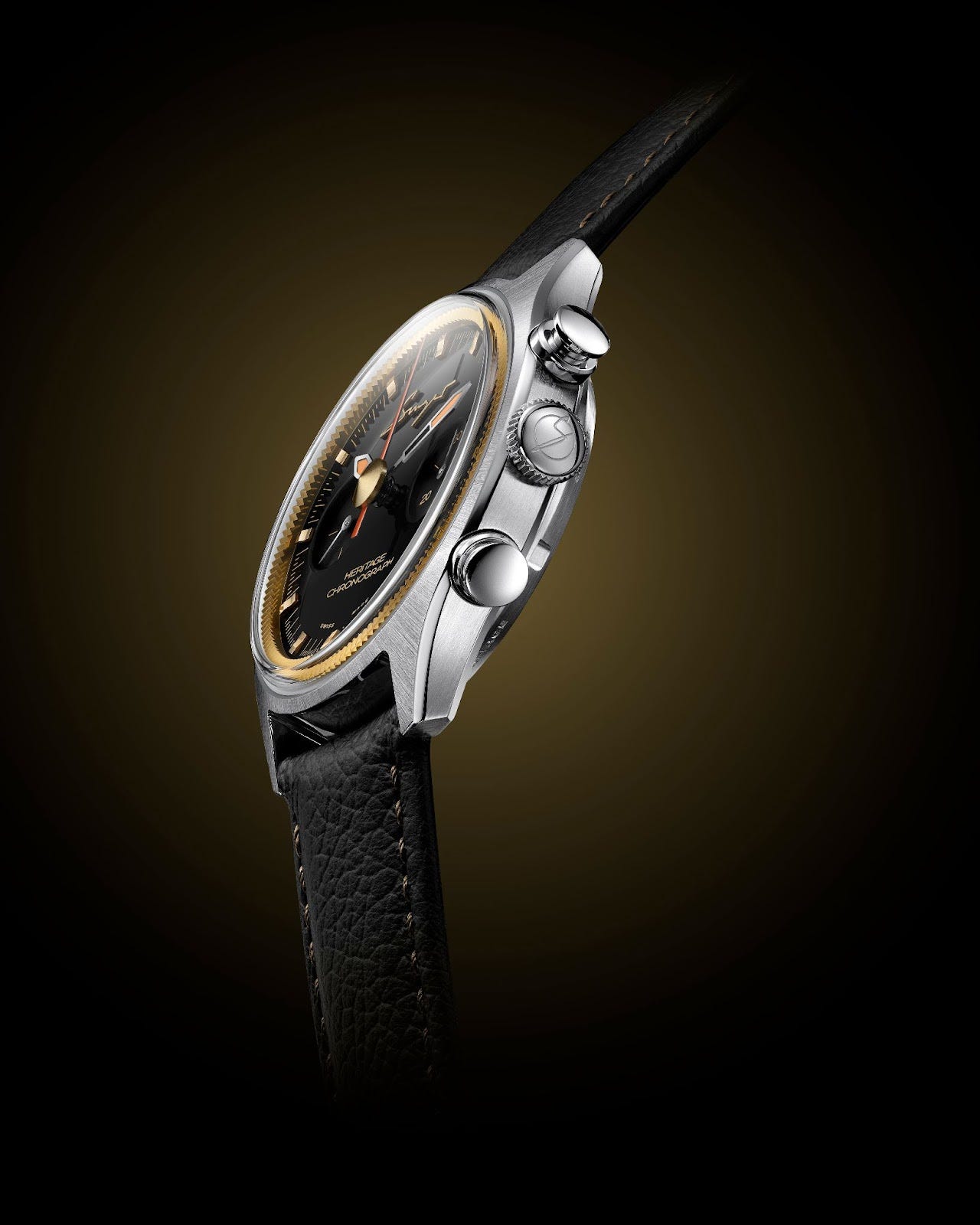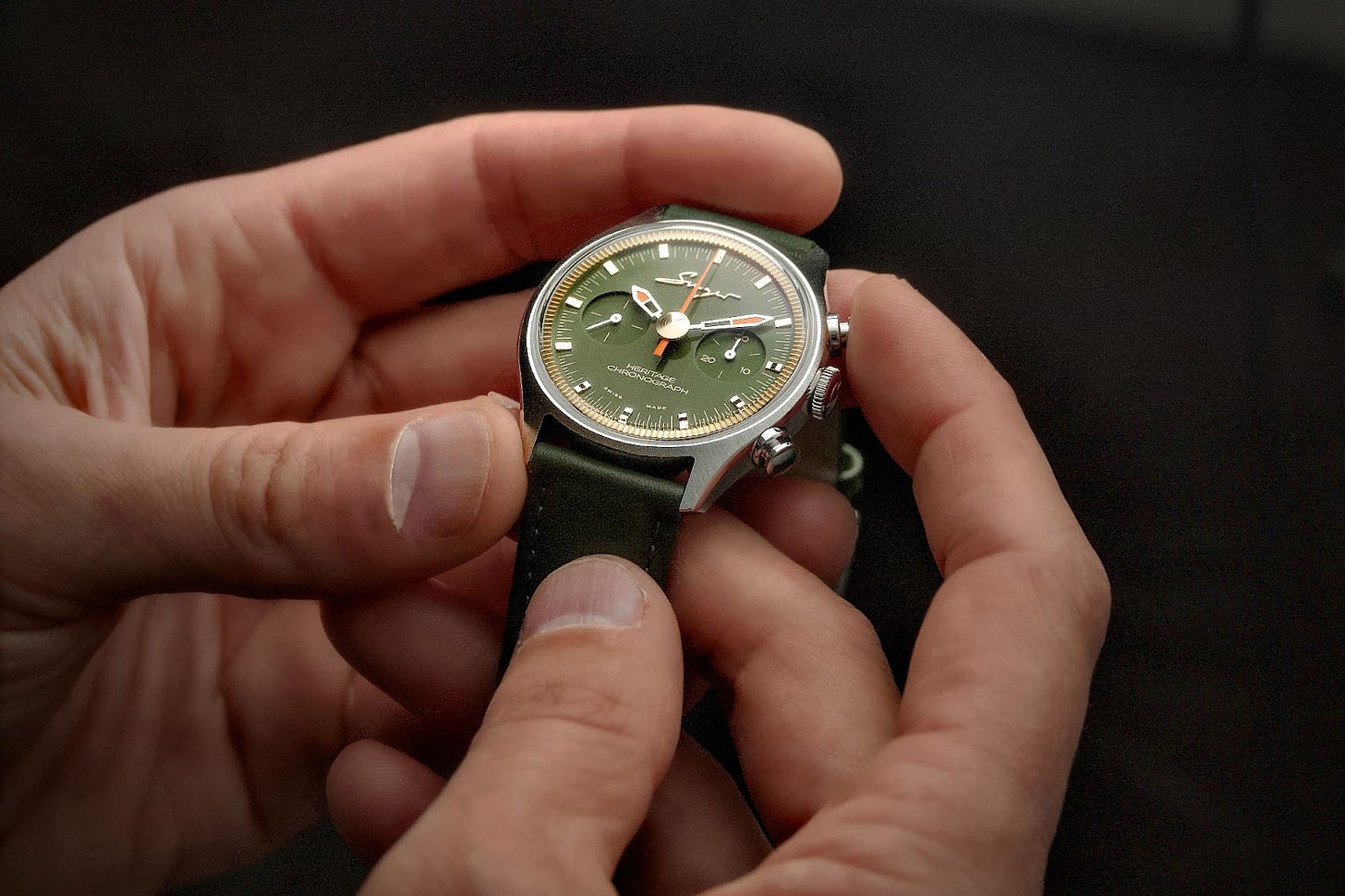Valjoux Reborn, History Elevated
How Singer Reimagined's meticulous restoration of untouched Valjoux 236 movements redefines watchmaking heritage
In 1974, as quartz technology was sending shockwaves through the Swiss watch industry, Valjoux released what would become one of its final mechanical triumphs: the caliber 236. Evolving from the legendary Valjoux 23, this refined column-wheel chronograph movement increased the frequency from 18,000 to 21,600 vibrations per hour, delivering enhanced precision and stability1.
Production was short-lived as the Quartz Crisis deepened. Many of these movements were left untouched, their potential unrealized—mechanical time capsules from an era when traditional watchmaking seemed destined for obsolescence.
Nearly fifty years later, these pristine, never-assembled movements have found their way to Singer Reimagined's Geneva workshop. There, master watchmakers aren't merely assembling them—they're elevating them beyond what was even possible during their creation.
Not Just Another Heritage Release
The watch world is saturated with "heritage-inspired" pieces that merely mimic vintage aesthetics. Singer Reimagined takes a fundamentally different approach.
The Heritage Collection represents Singer's official launch of its "Restored" pillar, complementing their existing "Reimagined" and "Reborn" philosophies. This isn't heritage-inspired—it's the genuine article, thoughtfully preserved and elevated beyond its original specifications.
"Restoration is about more than preserving the past—it's about reinterpreting it for the future," explains Marco Borraccino, Co-Founder and Creative Director.
Exceptional Execution in Every Detail
Encased in a refined 38.8mm stainless steel housing with sunray satin finish and mirror-polished chamfers, these watches embody timeless elegance with distinctly Singer design cues:
Singer's signature toothed golden flange
Applied indices and lacquered dials
Available in Empire Green or Piano Black variants
Central hours and minutes, small seconds at 9 o'clock
Chronograph with central seconds hand and 30-minute counter at 3 o'clock
48-hour power reserve
Sapphire crystal caseback revealing the exquisitely finished movement
What truly sets these watches apart, however, is their approach to the movement itself.
Beyond Restoration: Transformation
Gregory Commeau, Master Watchmaker at Singer, explains their philosophy: "The Valjoux 236 was already a movement of exceptional quality. Our goal was not just to bring it back to life, but to elevate it to a standard it never reached before."
Each movement undergoes a meticulous process including:
Frosted bridge finishes for a refined, matte effect
Hand-polished chamfers that catch light at every angle
Rhodium plating for enhanced longevity and brilliance
Precision engineering upgrades for modern reliability
This creates a unique intersection between restoration and haute horlogerie. While other brands may restore vintage movements to original specifications, Singer elevates them beyond what was possible at the time of their creation—a nuanced difference that produces extraordinary results.
A Natural Evolution
The expansion into the Heritage Collection represents a natural evolution of Singer's three-pillar philosophy. While their Track1 chronograph established the "Reimagined" pillar with its revolutionary approach to chronograph design, the Heritage Collection activates the "Restored" pillar in a meaningful way.
This strategic diversification showcases Singer's technical versatility beyond the specialized AgenGraphe caliber in the Track1. It also connects with collectors who appreciate classical chronograph designs alongside more avant-garde aesthetics.
The Heritage Collection subtly incorporates Singer's automotive heritage while establishing itself as a serious contender in luxury chronographs. The toothed golden flange evokes precision engineering, while the Singer Orange on the chronograph seconds hand recalls the brand's automotive accents. However, it avoids becoming a mere "car watch" through restrained elegance and focus on traditional chronograph design principles.
The Logistical Challenge of History
Unlike the Track1 line with its modern movement, the Heritage Collection is built around a finite supply of new old stock Valjoux 236 movements, with production capped at 100 pieces in 2025.
This creates both exclusivity and constraints. The restoration process demands specialized expertise in traditional finishing techniques, potentially requiring either training existing watchmakers or bringing new talent into the Singer workshop.
It's a calculated risk that demonstrates the brand's commitment to meaningful horological preservation rather than mass production.
The Brand Behind the Vision
Singer Reimagined emerged from a collaboration between Rob Dickinson, founder of Singer Vehicle Design, and Marco Borraccino, a watch designer with experience at brands like Panerai. Established in Geneva, the brand distinguished itself with the Track1 chronograph in 2017.
Borraccino's vision extends beyond creating simply another watch brand: "We believe in the power of restoration, in breathing new life into mechanical artistry, and in ensuring that great movements of the past don't just fade into obscurity."
What defines Singer Reimagined across both the Track1 and the Heritage Collection is an obsessive attention to detail and finishing. From the perfectly executed case chamfers to the meticulously applied dial elements, Singer timepieces exhibit exceptional craftsmanship that places them firmly in the upper echelons of independent watchmaking.
Why This Matters
The Singer Reimagined Heritage Collection redefines the relationship between vintage movements and contemporary watchmaking standards. Rather than simply reproducing the past or modernizing it beyond recognition, Singer has chosen a more nuanced path—respecting historical significance while elevating execution to exceptional standards.
For the broader watchmaking industry, this approach offers a compelling template for meaningful engagement with horological heritage—demonstrating that the most respectful way to honor mechanical history is not to preserve it in amber, but to realize its fullest potential through contemporary craftsmanship.
As Singer Reimagined continues to develop its three-pillar approach, the Heritage Collection establishes an important counterpoint to the innovative Track1. Together, they demonstrate the brand's comprehensive vision for watchmaking—one that embraces both revolutionary thinking and evolutionary refinement.
In a market often caught between mindless innovation and soulless heritage mining, Singer Reimagined has charted a more thoughtful course—one that recognizes that "great movements, like great ideas, never really disappear. Sometimes, they just need the right hands to bring them back to life."
If you enjoyed this article, consider subscribing to receive more insights on independent watchmaking and horological culture.
About the Author
Sergio Galanti is a journalist specializing in independent watchmaking and mechanical horology.
The Valjoux 236 is a relatively rare and refined chronograph movement that belongs to the Valjoux 23 family, one of the most respected lines of hand-wound chronograph calibers in Swiss watchmaking.
Origins:
Valjoux 23 was first introduced in 1916 by Valjoux SA (part of the Ébauches SA group, later absorbed into ETA).
The Valjoux 236 is a later evolution of this base, with column wheel architecture and manual winding, prized for its reliability and smooth chronograph engagement.
Key Features:
Column wheel chronograph: Ensures precise and smooth operation.
Manual winding
Flyback function: A distinguishing feature of the 236 over the base Valjoux 23. This allows the user to reset the chronograph without stopping it first—ideal for aviation or precise timing scenarios.
Subdial layout: Typically 3-6-9 (small seconds at 9, 30-minute counter at 3, and central chronograph seconds).
Beat rate: 21,600 vph
Collectibility:
Because of its flyback function, military ties, and column wheel construction, the Valjoux 236 is sought after by collectors looking for robust, tool-grade chronographs with historical cachet and mechanical sophistication.
Usage:
During the 1970s, several esteemed watchmakers incorporated the Valjoux 236 into their chronograph offerings. Brands such as Girard-Perregaux, Tissot, and Vulcain utilized this movement in various models, often characterized by two-register chronograph layouts with subdials at 3 and 9 o'clock. These timepieces are now sought after by collectors for their mechanical prowess and historical significance.






